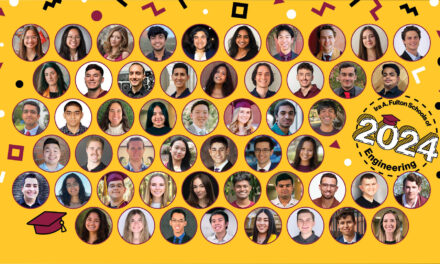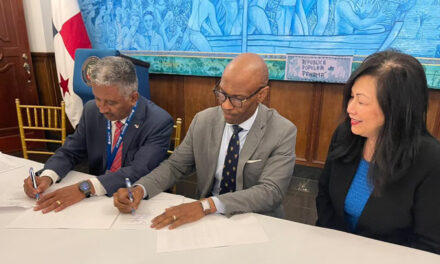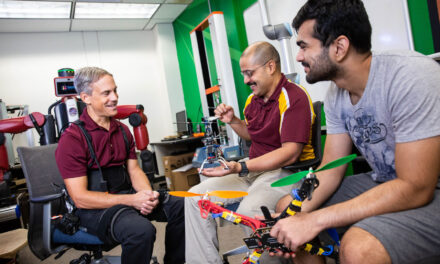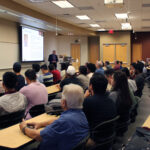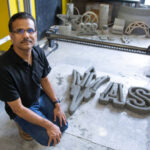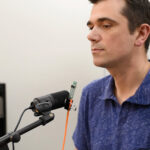
Engineering low-carbon building materials
New Fulton Schools research center aims to reduce greenhouse gas emissions from cement and concrete manufacturing

Cement is the strong and versatile binder that holds together sand and aggregates in concrete used to erect the sturdy structures that have long shaped our modern built environments.
Cement is also a major source of one of the most prevalent environmental pollutants of the modern age: carbon dioxide. Cement’s ecological drawbacks stem from the materials and processes involved in manufacturing it, leading to substantial emissions of carbon dioxide that are a major cause of climate change.
Carbon dioxide is the most prevalent among greenhouse gases that are trapping the sun’s heat in Earth’s atmosphere and warming the planet at a rate faster than at any other time in recorded history.
Global warming’s effects range from threatening the planet’s natural resources and negatively impacting human and environmental health to protracted concerns about disrupting various market sectors and even whole economies. The warming trend endangers the supply of adequate housing for future generations, the habitability of some regions and overall societal stability.
“With all of these environmental challenges looming, we thought it was time to combine expertise from a variety of disciplines at ASU to contribute to solutions,” says Narayanan Neithalath, Fulton Professor of Structural Materials in the School of Sustainable Engineering and the Built Environment, part of the Ira A. Fulton Schools of Engineering at Arizona State University.
Combining decarbonization and structural reinforcement
The new Center for Carbon Efficient and Advanced Manufacturing of Materials and Structures, or CAMMS, directed by Neithalath, aims to decarbonize the manufacturing of cement, which is responsible for more than 20% of all industrial carbon emissions.
The CAMMS research team plans to use new source materials and improved manufacturing and construction processes to accomplish its goal.
The center’s endeavors will also include exploring ways to effectively use recycled and waste materials in cement and concrete production, as well as optimizing design and construction techniques involving concrete.
Digital manufacturing — a term for 3D printing of materials — is a focus area of the center as an alternative to traditional construction and to better utilize and optimize materials to reduce the carbon impact of structures.
Another focus of the center’s work is reducing the environmental impact of concrete when it’s reinforced with other materials, such as steel. Concrete itself is brittle and will shrink by small amounts over time, leading to cracking and disintegration if it is not reinforced. Using reinforcing materials also helps the concrete withstand a variety of load types — such as when it is used in transportation system infrastructure.
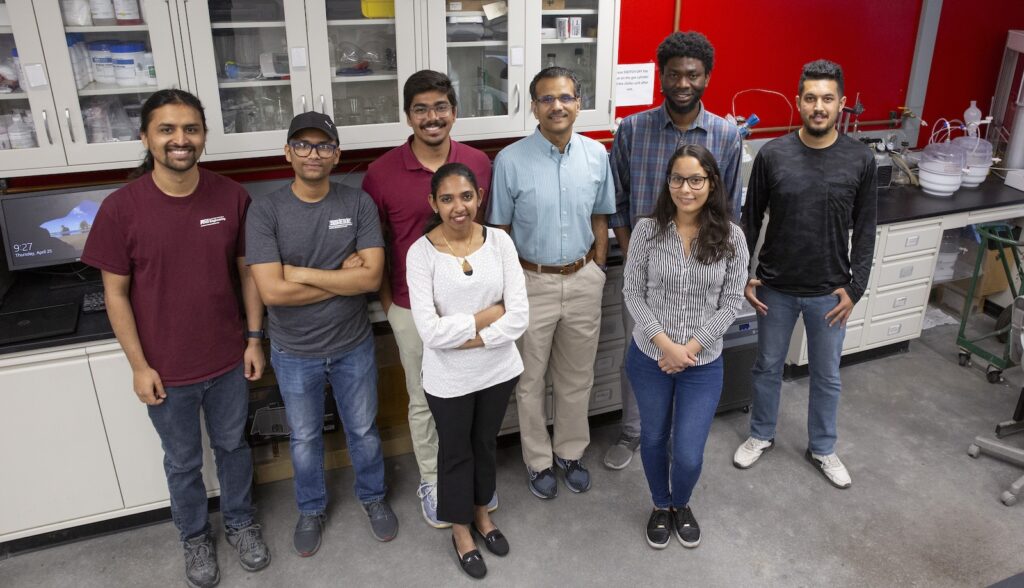
Professor Narayanan Neithalath (center) a faculty member in the Ira A. Fulton Schools of Engineering, is pictured in the Advanced Cementitious Materials Laboratory on Arizona State University’s Tempe campus with (from left to right) engineering doctoral students Avinaya Tripathi, Pranav Acharya, Srikarah Volaity, Oluwadamilare Adesina, Sahil Surehali, Aswathy Simon and visiting doctoral student Rayara Pinto Costa. Through research guided by Neithalath, these students and others have gained experience working with carbon-efficient cement manufacturing methods, 3D printing of concrete and multiphysics modeling and simulations. Photographer: Erika Gronek/ASU
Creating a team of cross-disciplinary experts
With funding from the U.S. National Science Foundation, or NSF, U.S. Department of Energy and industrial partners, Neithalath says CAMMS researchers will strive to develop more effective techniques to decarbonize cement and concrete while improving the properties and longevity of building materials.
CAMMS plans to accomplish that goal by working with industry partners and researchers across the Fulton Schools and ASU whose expertise focuses on areas that intersect with the center’s mission.
“We want to address the need for new and improved materials and systems to further advance decarbonization of the built environment,” Neithalath says. “We hope to do that by coalescing a number of efforts at ASU in this sphere under one umbrella.”
Among the major contributors will be researchers working with the Electrified Processes for Industry Without Carbon, or EPIXC, a part of the Clean Energy Manufacturing Innovation Institute. EPIXC’s CEO is Fulton Professor of Industrial Decarbonization Sridhar Seetharaman, who is also the Fulton Schools’ chief science officer.
Seetharaman says much of the cement manufacturing’s carbon emissions stem from the current manufacturing processes. Those methods use fossil fuels and involve chemical reactions and extreme heat that combine to produce a lot of carbon dioxide.
A major EPIXC project involves developing technology that will provide the high temperatures required for chemical reactions in industrial materials manufacturing using electricity, thereby avoiding the release of carbon dioxide.
Chemists, materials scientists, civil engineers, renewable energy experts and specialists in technology modeling and integration will work together to take on these complex challenges. Seetharaman says such a varied combination of skills will be needed to guide the advanced design and testing processes required to create sustainable infrastructure materials.
Renewable energy sources critical to making sustainable construction materials
“Instead of using fossil fuels, we can use solar and wind power and other renewable sources of energy,” Neithalath says. “If your electricity comes from a renewable source, then you displace the carbon emissions resulting from fossil fuels used in process heating for manufacturing infrastructure materials.”
The new research center gives Neithalath, a fellow of the American Concrete Institute, a stronger platform for expanding his work to develop new carbon-efficient cement and concrete manufacturing methods and more effective and sustainable construction materials.
CAMMS will also benefit from the work of Barzin Mobasher and Patrick Phelan.
Mobasher, a professor of civil and environmental engineering in the School of Sustainable Engineering and the Built Environment, part of the Fulton Schools, specializes in developing new construction materials and creating processes for designing, analyzing and manufacturing them.
One of his areas of focus is composite materials, including research on fiber-reinforced concrete to improve its durability and performance.
Mobasher says that given the growing amount of large-scale infrastructure and other construction projects today, he sees a critical need to ensure major load-bearing structures and systems are not exacerbating the carbon emissions problem.
He has been advocating for novel solutions for reinforcing concrete to better resist heavy loads. Mobasher recently led a webinar discussion titled “Low-Carbon Aspects of Alternative Reinforcement Systems” for NEU, an American Concrete Institute Center of Excellence on Carbon Neutral Concrete.
Phelan, the Fulton Schools associate dean of graduate programs and a professor of mechanical and aerospace engineering in the School for the Engineering of Matter, Transport and Energy, part of the Fulton Schools, also directs the ASU Energy Efficiency Center, and is working with Neithalath on a project supported by the NSF to make carbon-free cement without using fossil fuels or natural gas.
Growing carbon emissions threat makes curtailing crucial
Phelan and Neithalath are also exploring ways to use solar power as a clean energy source to provide the heat needed for the cement manufacturing process. They are working to sustainably provide the high temperatures needed for chemical reactions that are required for materials synthesis.
“It’s particularly challenging because the temperatures needed are so very high,” Phelan says, “The process has been used for hundreds of years, but it’s very difficult to do without a lot of heat, which is what has produced vast amounts of carbon dioxide over that time.”
Phelan says achieving CAMMS’ decarbonization goals will involve so many different facets of chemical, energy and materials engineering that it is difficult to accurately assess the possibility of developing solutions quickly, even if scientists and engineers are making progress in their lab experiments. Still, he is confident about the prospects for eventual success.
“As complex as it is to not only come up with effective solutions and to get industry to implement them, I’m optimistic,” Phelan says, “We are not the only people working on this, because the scale of the carbon dioxide emissions problem is such a growing threat that is attracting more attention around the world.”
CAMMS’ efforts are drawing support from several industry collaborators, ranging from large cement manufacturers to start-up companies working on carbon management in the construction materials field.
Neithalath says the new center’s work will also provide students in the Fulton Schools engineering graduate programs a variety of opportunities to engage with industry partners in research involving laboratory experiments, modeling and field-testing.






